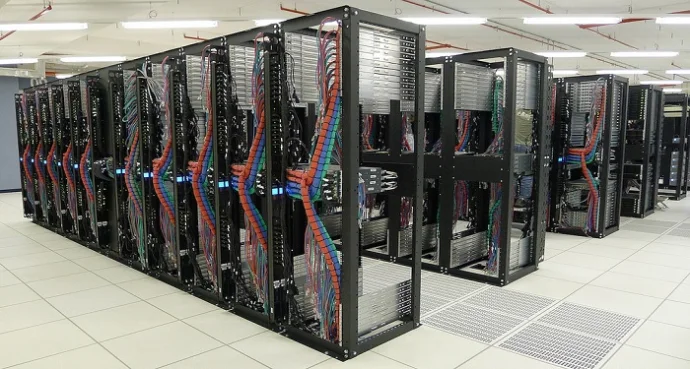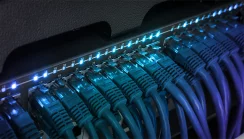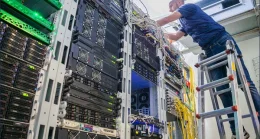The Advantages of Using Open Frame IT Cabinets in Comms Rooms and Datacentres
There are times when it makes sense to use an open frame in an IT installation rather than a completely enclosed rack or server cabinet. How do you decide and what are the advantages of an open-frame rack?
The Advantages of an Open Frame Cabinet
Open frame server racks provide a basic frame construction with no side panels and may even not use a rear pane or front door. This type of frame installation may not provide the same aesthetic appeal, security or control of cooling as a complete server cabinet but there are times when it can be considered as an alternative way to rack IT equipment.
Open Frame Rack Installations
An open rack provides a key advantage in that all the equipment and connections within the rack are easily reachable. This makes it easier to install server racks and other IT peripherals into the frame when compared to an enclosed server cabinet.
In a closed cabinet, access is limited by side panels and covers, and these must sometimes be removed to gain access for the installation of new hardware or connections. Using an open frame helps to make this process easier, including the installation of mounting brackets and from whichever angle is easiest for the installation.
Server and System Maintenance
Regular maintenance and inspection may be required for each of the components within the frame. Without cabinet sides, the open frame makes hardware and cable connections more easily accessible, even from the sides. As well as making easier to swap cables and replace IT components, the open frame males it easier to locate bulkier items of hardware such as a rack mount UPS system and its battery extension tray.
Cable Management
It is not uncommon to have several hundred cables within a server room installation with many of these running into a set of server cabinets and racks. Using an open frame makes it easier to identify and locate cables and to manage these to avoid accidental disconnection. An open frame makes it easier to route cables, in any direction and with the risk of obstruction from a side panel.
Cooling and Air Flow
Within a closed cabinet or rack, the servers present a lot of heat that must be managed. ‘Hot-spots’ can build up which can lead to a potential fire hazard if not managed and controlled.
Open frame racks allow the heat to flow into the wider room environment and allow for a less restricted air flow around the servers and any other IT equipment within the server rack.
Purchase and Installation Costs
The cost of an open frame is less than a server rack. Not only is there less metal work in terms of side panels (and even front and rear doors) but there is less weight to ship and so delivery costs are lower. The overall footprint may also be slightly less but only marginally so.
The Disadvantages of Using Open Frame IT Racks
Open frame IT racks should only be considered when access is controlled into the room. The fact that the frame is exposed, can present a security issue if someone were to want to act maliciously or accidentally disconnects or damages equipment within the frame. Heat output can also be an issue. In a closed cabinet or rack it, the design is one that supports servers drawing in cool air and expelling this via the rear of the cabinet. This arrangement can be used to ensure managed cooling and supports the use of hot and cold-aisle containment.
In an open frame, the heat simply mixes with the air within the server room and is not managed as effectively. It may be necessary therefore to ensure that there is adequate provision made for server room temperature monitoring to prevent a build-up of heat. If the heat build-up within a server cabinet was such that there was a fire hazard, an enclosed cabinet will to a degree contain this dependent upon the fire rating of the cabinet.
Summary
Open frame cabinets may present advantages for certain types of installation. Examples include single cabinet installations in small and compact server rooms. These types of installation would still require an air conditioning unit or some other form of forced ventilation to avoid a potential heat build-up. Open frame cabinets may also be used for telecommunications systems within a comms room. Another example would be to use the open frame for less critical IT peripherals and cabling management next to a complete cabinet housing network server and other critical IT components.
In a datacentre environment, whether colocation or enterprise, it is more common to use complete server racks and cabinets. The reasons for this include the higher security levels they provided, as well as their greater capacity for channelling air flow and improving cooling efficiency. In a datacentre environment open frame racks will place different demands on the cooling system and airflow management could be more problematic.


























